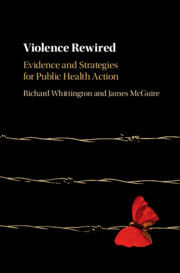Book contents
- Violence Rewired
- Violence Rewired
- Copyright page
- Epigraph
- Contents
- Figures
- Tables
- Boxes
- Foreword
- Acknowledgements
- Introduction and Overview
- Part I Origins
- 1 The Prospect of Human Violence
- 2 The Roots of Human Violence
- 3 The Biology of Violence
- 4 Developmental Factors in Violence Propensity
- 5 Structural Violence
- Part II Solutions
- Rewiring Our Expectations
- Appendix Major UN Initiatives to Address Violence, 1986–2018
- References
- Index
5 - Structural Violence
Social and Political Factors in Understanding Violence
from Part I - Origins
Published online by Cambridge University Press: 13 March 2020
- Violence Rewired
- Violence Rewired
- Copyright page
- Epigraph
- Contents
- Figures
- Tables
- Boxes
- Foreword
- Acknowledgements
- Introduction and Overview
- Part I Origins
- 1 The Prospect of Human Violence
- 2 The Roots of Human Violence
- 3 The Biology of Violence
- 4 Developmental Factors in Violence Propensity
- 5 Structural Violence
- Part II Solutions
- Rewiring Our Expectations
- Appendix Major UN Initiatives to Address Violence, 1986–2018
- References
- Index
Summary
As we have now seen, any act of violence is a result of many factors in the perpetrator’s life. The most obvious of them are immediate and concrete situational triggers such as a perceived insult or attack. The trigger here is proximal, closely linked in time and space to when and where the act of violence occurs. Such factors are usually not difficult to discern and their relationship to the act of violence is clear and specific, so they are relatively easy to identify, isolate, and address. But many other factors, just as important, are far removed in time and space from the moment when the violent act takes place. Time-wise, they may lie far back on a lifelong pathway of shaped behaviour, acquired beliefs and restricted choices. We have seen in the last chapter how developmental experiences set up some people for a future of potential violence. Attitudes, assumptions, emotional impulsivity, and violent tendencies all come from a person’s history based on where they grew up and who, if anybody, cared for them. Space-wise, these factors form the micro- and macro-environment the person inhabits at the moment of violence and act as less obvious influences channelling, as Brecht says, the flow of behaviour. Poverty, gender, education, and inequality are not easily perceptible amid the firecrackers of the immediate violent encounter, but they are present nevertheless and play a crucial part in making violence almost inevitable in some circumstances and for some people.
Information
- Type
- Chapter
- Information
- Violence RewiredEvidence and Strategies for Public Health Action, pp. 124 - 138Publisher: Cambridge University PressPrint publication year: 2020
